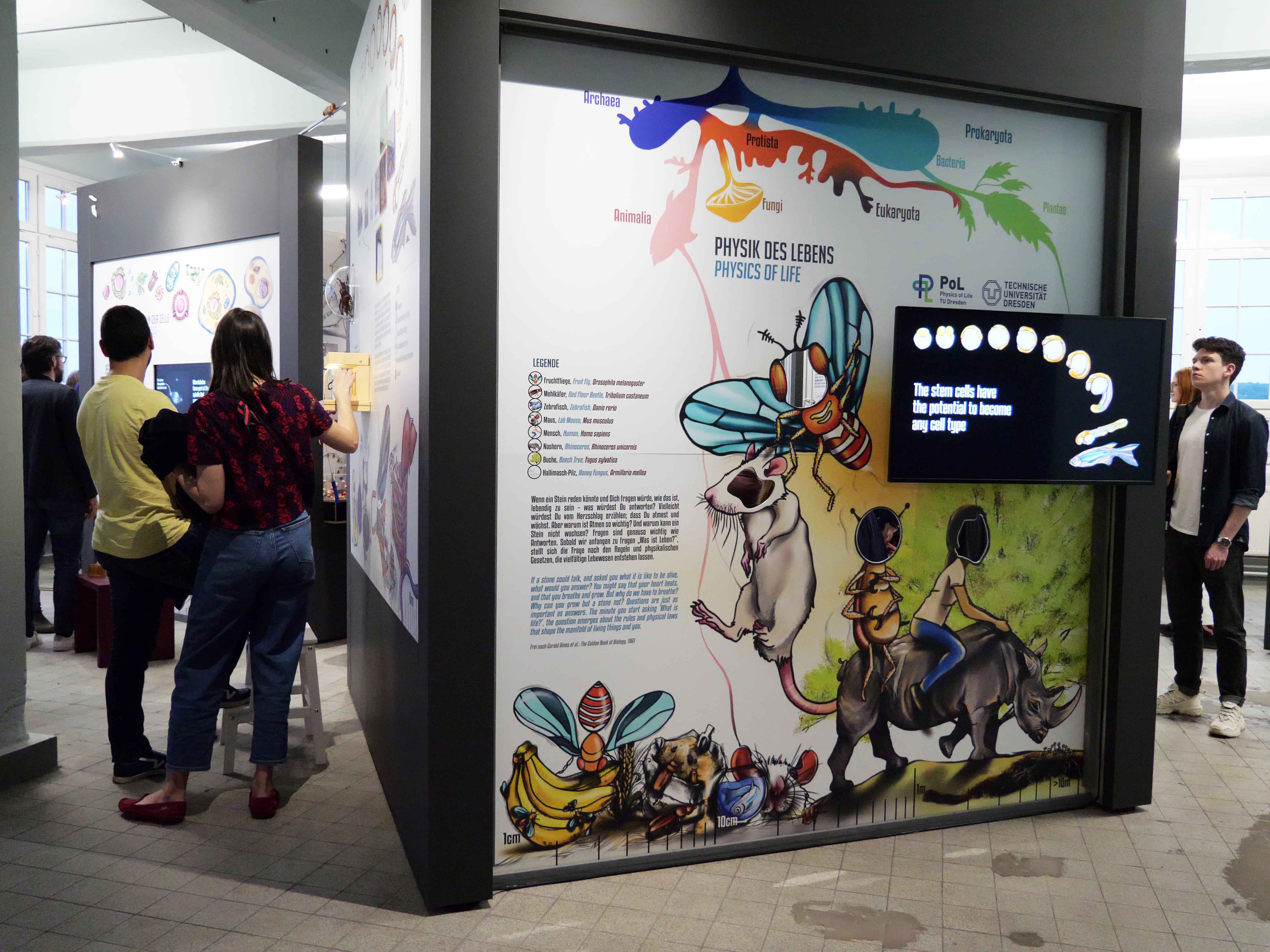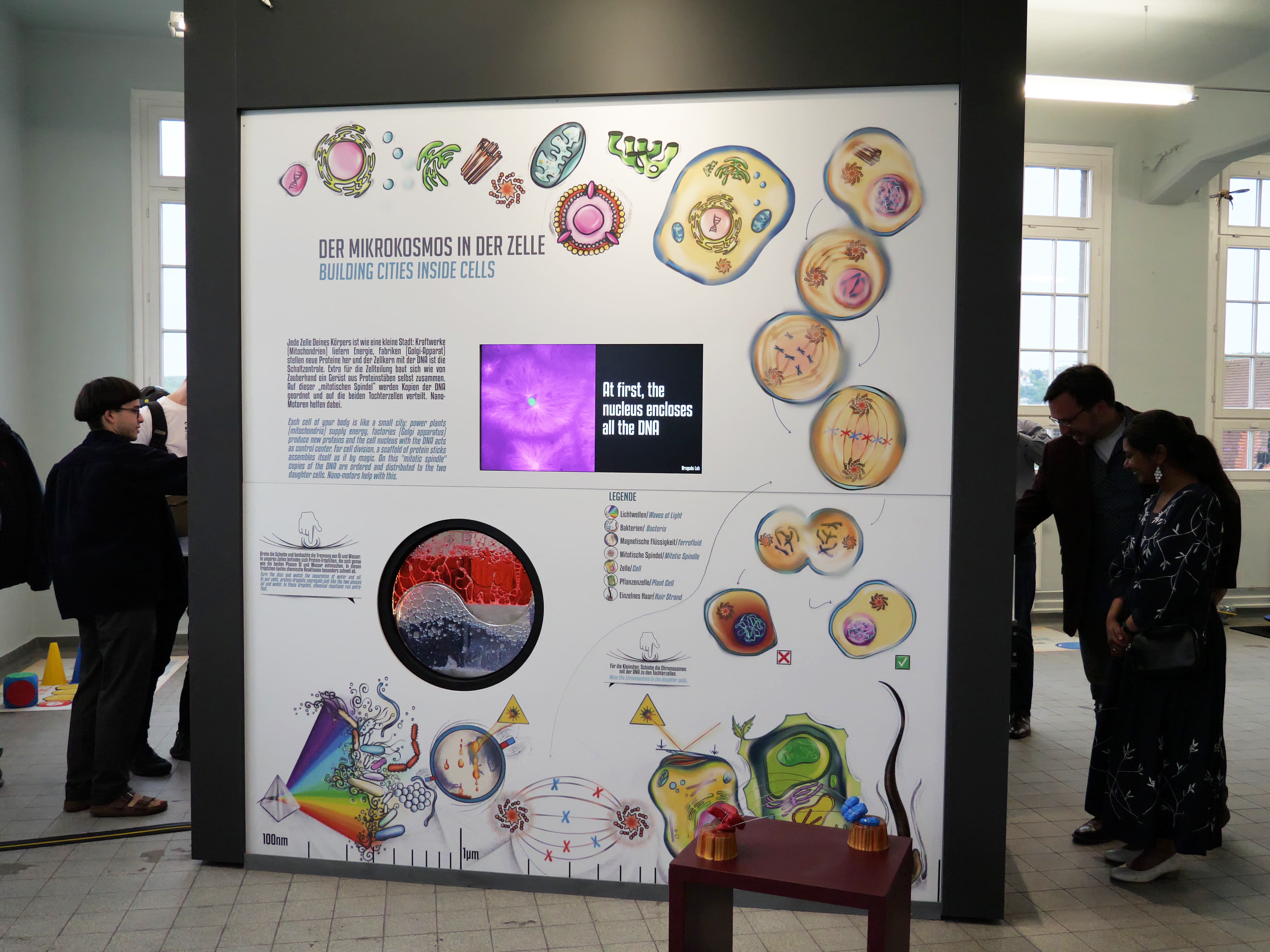How life develops
How does a complex organism develop from a tiny egg cell? And how can salamanders even regrow lost limbs? Scientists from the fields of physics, biology and computer science are researching these and other questions at the interdisciplinary Physics of Life Cluster of Excellence at TU Dresden. Together, they are investigating the laws of physics that enable the structure and development of living matter in cells, molecules and tissues.
Hands-on exhibition
The hands-on exhibition "Physics of Life" in the SCHAUFENSTER DER FORSCHUNG series invites visitors to experiment with magnetic fluids, phase separation and molecules they can build themselves. Spectacular microscopic video recordings make it possible to experience how life is organised at the smallest level, how a cell divides or a fish embryo develops. Large-scale images show how the interplay of molecules, cells and tissues shapes an organism, the role played by chance and genetic information and how physical forces give shape to an embryo.
Clusters of excellence, high-tech, cutting-edge research: Dresden is one of the most important centres of scientific research in Germany. The SCHAUFENSTER DER FORSCHUNG is a space where visitors can find out about selected current research projects at Dresden institutes, their aims, methods and results. The "Physics of Life" exhibition and the accompanying programme were developed in cooperation with the Physics of Life Cluster of Excellence at TU Dresden.

The Physics of Life Cluster of Excellence
At the interdisciplinary Cluster of Excellence Physics of Life (PoL), which was established in 2019, scientists from the fields of biology, physics, medicine and computer science are conducting research to understand the organisation of life in molecules, cells and tissues and to find out which laws of physics underlie the organisation of this living matter. PoL is a collaboration between scientists at TU Dresden and research institutions of the DRESDEN-concept network, such as the Max Planck Institute of Molecular Cell Biology and Genetics (MPI-CBG), the Max Planck Institute for the Physics of Complex Systems (MPI-PKS), the Leibniz Institute for Polymer Research (IPF) and the Helmholtz Centre Dresden-Rossendorf (HZDR).

























